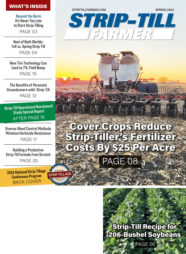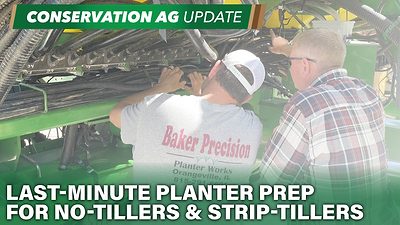Source: Minnesota Soybean Growers Assn.
Farmers are always on the lookout for ways to increase profitability while protecting their soil and water. One option many farmers have implemented and others are considering is some form of reduced or conservation tillage.
Incorporating practices like strip-till into a farming operation may involve a significant shift away from how they’re currently operating, and farmers can be hesitant to make the switch. Proponents of strip-till say the practice can be just as productive as conventional tillage practices. But strip-till can also conserve soil resources while saving time and money because tillage, fertilization and planting all take place in a single pass. Here are some common misconceptions about strip-till farming.
Myth: I risk getting reduced yields if I don’t use conventional tillage.
Truth: Multiple on-farm and university studies throughout Minnesota and the Midwest have shown that strip-till farming consistently produces higher corn and soybean yields than no-till, and equal to those of conventional tillage.
“Yields generally don’t go down,” says Jodi DeJong-Hughes, crops specialist with the University of Minnesota Extension. “But the management and learning curve go up.”
Because strip-till involves different equipment and management, farmers can sometimes have a difficult time finding other farmers from whom they can learn. The University of Minnesota puts on an annual conservation-tillage conference and tillage field days to help farmers learn more about tillage options and how they impact farm productivity.
Myth: My soils won’t warm as quickly in the spring with strip-till.
Truth: Even though only narrow strips of ground are tilled, multiple years of research from multiple Minnesota locations shows that spring soil temperatures are essentially the same in the tilled zones as they are in conventionally tilled fields. Temperatures are cooler in the untilled zones, but that has little or no impact on seed germination.
Myth: I tried it years ago and it doesn’t work for me.
Truth: Some farmers did try strip-till farming decades ago and struggled to make it work. As with many things in agriculture, advances have been made to equipment and guidance systems since then. “Technology has definitely changed the game,” DeJong-Hughes adds. Manufacturers have improved their equipment technology and RTK guidance systems have advanced, adding another level of precision. Strip-till may not be for every farmer, but tools and technology are improving to make it a viable option for many.
Myth: The equipment I need is too expensive.
Truth: As with most pieces of farm equipment, there is a significant investment involved to purchase strip-till equipment. However, converting to strip-till does make multiple implements obsolete. Because tillage, fertilization and planting takes place all at once, farmers would no longer need all of their current tillage equipment. Farmers use the same piece of equipment if they choose to do fall tillage.
“No one wants to get rid of traditional equipment until they’re sold on another practice,” says DeJong-Hughes. “But when someone believes in it, they’re more willing to pay for what they need.” DeJong-Hughes says some manufacturers will work with farmers to rent equipment to see if they like it and to see if strip till is right for them. Yearly cost savings can also help offset the cost of any equipment.
A three-year on-farm study in southwestern Minnesota showed that the farmer who practiced strip-tillage saved about $13.55 per acre compared to disk ripping and chisel plowing.






Post a comment
Report Abusive Comment